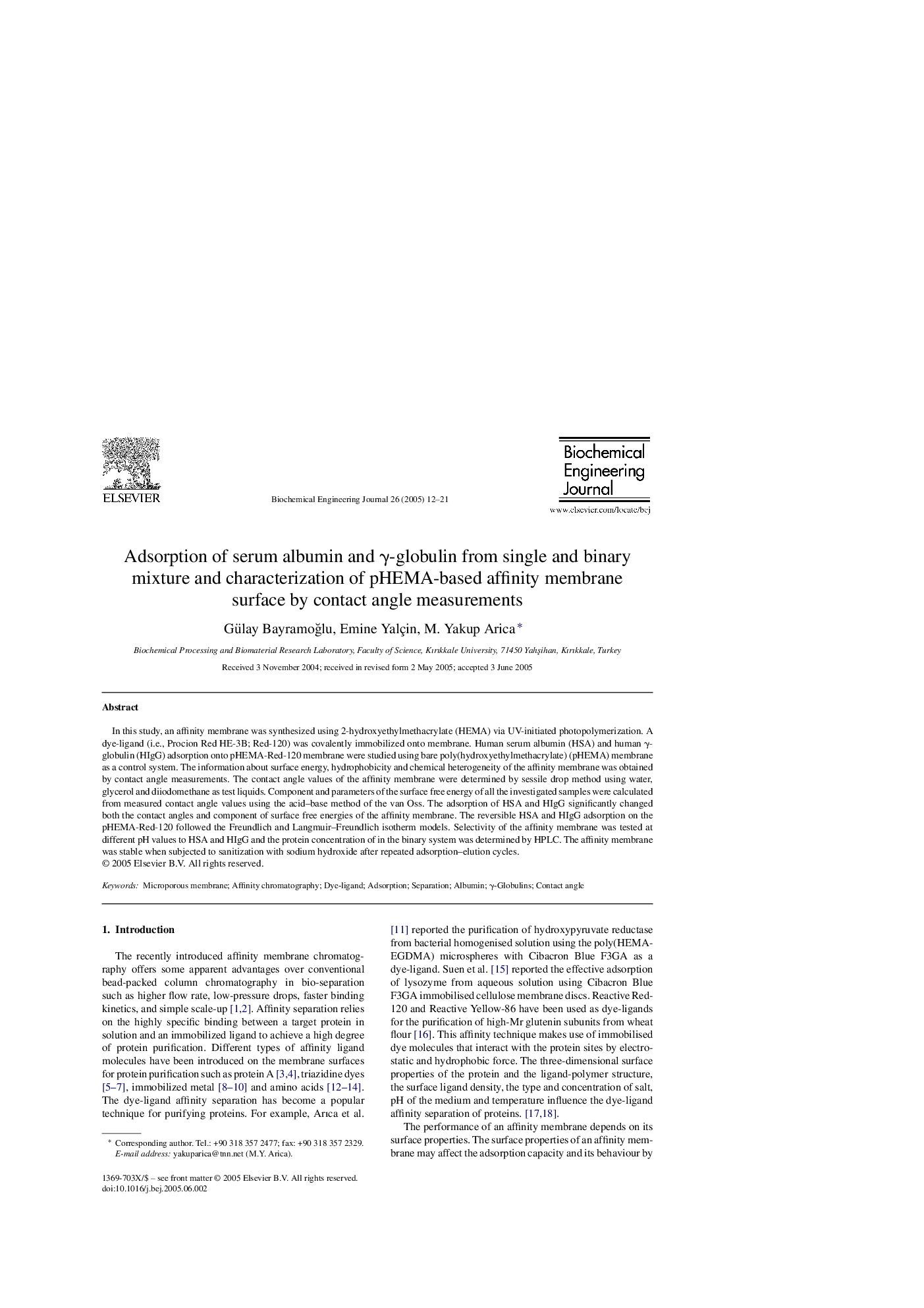| Article ID | Journal | Published Year | Pages | File Type |
|---|---|---|---|---|
| 10161099 | Biochemical Engineering Journal | 2005 | 10 Pages |
Abstract
In this study, an affinity membrane was synthesized using 2-hydroxyethylmethacrylate (HEMA) via UV-initiated photopolymerization. A dye-ligand (i.e., Procion Red HE-3B; Red-120) was covalently immobilized onto membrane. Human serum albumin (HSA) and human γ-globulin (HIgG) adsorption onto pHEMA-Red-120 membrane were studied using bare poly(hydroxyethylmethacrylate) (pHEMA) membrane as a control system. The information about surface energy, hydrophobicity and chemical heterogeneity of the affinity membrane was obtained by contact angle measurements. The contact angle values of the affinity membrane were determined by sessile drop method using water, glycerol and diiodomethane as test liquids. Component and parameters of the surface free energy of all the investigated samples were calculated from measured contact angle values using the acid-base method of the van Oss. The adsorption of HSA and HIgG significantly changed both the contact angles and component of surface free energies of the affinity membrane. The reversible HSA and HIgG adsorption on the pHEMA-Red-120 followed the Freundlich and Langmuir-Freundlich isotherm models. Selectivity of the affinity membrane was tested at different pH values to HSA and HIgG and the protein concentration of in the binary system was determined by HPLC. The affinity membrane was stable when subjected to sanitization with sodium hydroxide after repeated adsorption-elution cycles.
Keywords
Related Topics
Physical Sciences and Engineering
Chemical Engineering
Bioengineering
Authors
Gülay BayramoÄlu, Emine Yalçin, M. Yakup Arica,
